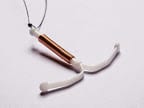Just about every major news outlet of the mainstream media has celebrated a recent report released by the state of Colorado revealing that the teen birth rate has dropped tremendously there. Although the reasons for this drop are varied, including the fact that young women are delaying sex longer than they used to, primary credit for the drop is being given to the state’s unique birth control education program. The state has a program called the Colorado Family Planning Initiative, and an element of the initiative is to strongly push LARCs (long-acting reversible contraceptives) over short-term birth control methods like the Pill.
Proponents of the program say that young women should use LARCs because they cannot be removed without a doctor’s visit. This fact, they say, will prompt girls to think long and hard about whether they want to become pregnant, and they will have to go to their doctor to request the device’s removal before pregnancy could be achieved. The devices can stay in a girls’ body for years before they expire, so advocates say that teenagers have more success avoiding pregnancy long-term with these methods, and Colorado’s initiative is crafted to urge girls to consider this fact when they decide on a birth control method.
LARCs include implants (devices that emit hormones which are implanted in a woman’s arm, for example), and IUDs (devices inserted into a woman’s uterus to make the environment hostile to fertilization). Pro-Lifers should be concerned about the latter, which have an overt mode of action (MOA) by which a woman’s reproductive system is made hostile to sperm, eggs, and embryos. According to a recent study summarized by the Charlotte Lozier Institute, copper IUDs work by emitting copper ions in a woman’s body to ensure that the living sperm, eggs, or newly-created embryos cannot survive.
First, an IUD works by basically trying to poison the sperm and eggs so that fertilization cannot occur. But when fertilization does occur, IUDs work by “preventing implantation” of the existing embryo into the uterus. As a result, the woman’s body will expel the embryo, and she will never know that she miscarried.
This latter mode of action is so overt that the copper IUD is a common (but expensive) form of “emergency contraception.” When inserted after sex (up to five days later, in fact), the device will emit copper ions that prevent a newly-created embryo from succeeding on its journey to the uterus. By the time the device is implanted, sperm have long since died, so the primary mode of action (to create a toxic environment to the gametes) is null. The IUD’s only mission, when implanted after sex, is to seek out and destroy new life.
The Charlotte Lozier Institute concludes: Managing Contraception (11th ed.) concedes as much: “In the month that [Paragard] is inserted as an emergency contraceptive, it may act by interfering with implantation.”[iv] Embryos unable to implant die.
Colorado’s boasts about its high rate of IUDs being implanted in teenage girls is troubling. Would that taxpayers – and the girls themselves – knew that the device is just as much an abortifacient as it is a contraceptive, essentially causing innumerable miscarriages in order to ensure that the young woman’s body blocks implantation, ensuring that she never achieves a sustained pregnancy.


